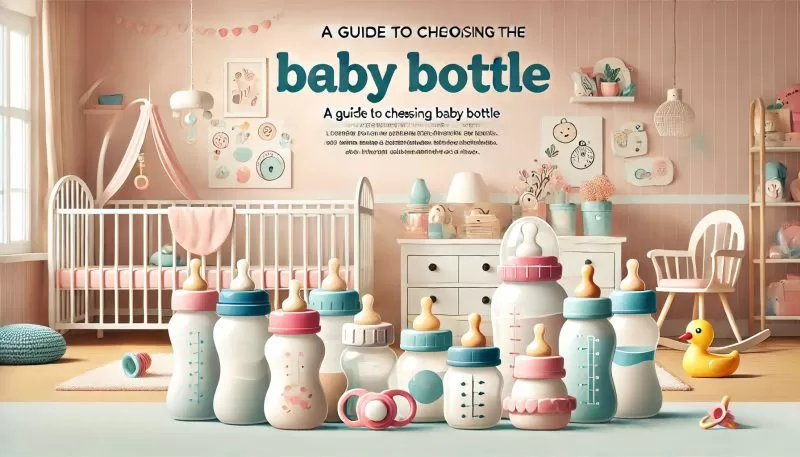Table of Contents
Best Baby Bottle Guide
When it comes to feeding your baby, choosing the right bottle is essential. It ensures comfort, safety, and ease of use. With so many options on the market, it can be overwhelming. New parents may struggle to know which is the Best Baby Bottle for their baby’s needs. In this guide, we’ll break down key factors to consider when selecting a baby bottle. This will help you make the right choice for your little one. Along the way, we’ll introduce top products available at ebabymart. These can simplify your decision-making process.
When it comes to choosing the best baby bottle, one of the most important factors is ensuring that it is designed for both safety and comfort. Many parents opt for bottles that are BPA-free and made with anti-colic designs to reduce the risk of digestive issues. To help guide your decision, you can check out this comprehensive guide on choosing baby bottles published by HealthyChildren.org, a trusted resource by The American Academy of Pediatrics. By keeping these factors in mind, you’ll be able to choose a bottle that best suits your baby’s needs.
Understanding the Basics: A Guide to Choosing the Best Baby Bottle
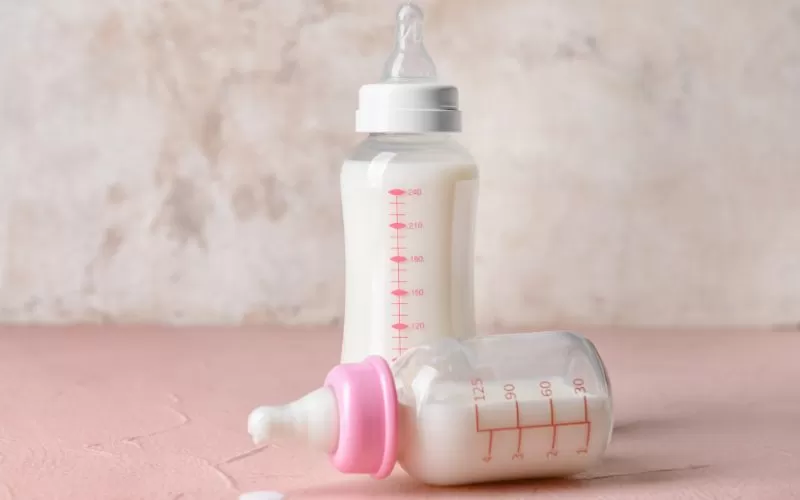
Before diving into specific products and features, it’s important to understand the basic elements of a baby bottle. Baby bottles come in various sizes, shapes, and materials, and each has its own pros and cons. Whether you’re looking for a bottle that mimics breastfeeding or one that prevents colic, there’s something out there for every baby.
Here are the primary features to consider when choosing the right baby bottle:
- Bottle size: Smaller bottles (4-5 oz) are suitable for newborns, while larger bottles (8-10 oz) are better for older babies.
- Nipple shape and flow: Depending on whether your baby is breastfeeding or bottle-feeding exclusively, you’ll want a nipple that mimics a natural latch or one that has a specific flow rate.
- Material: Baby bottles can be made from plastic, glass, silicone, or stainless steel. Each has its advantages, which we’ll cover later in the article.
For a reliable and eco-friendly choice, check out our Glass Baby Bottle Set, which is perfect for parents looking to avoid plastic while providing a safe and durable feeding option for their little one.
Best Baby Bottle: A Guide to Baby Bottle Types and Materials
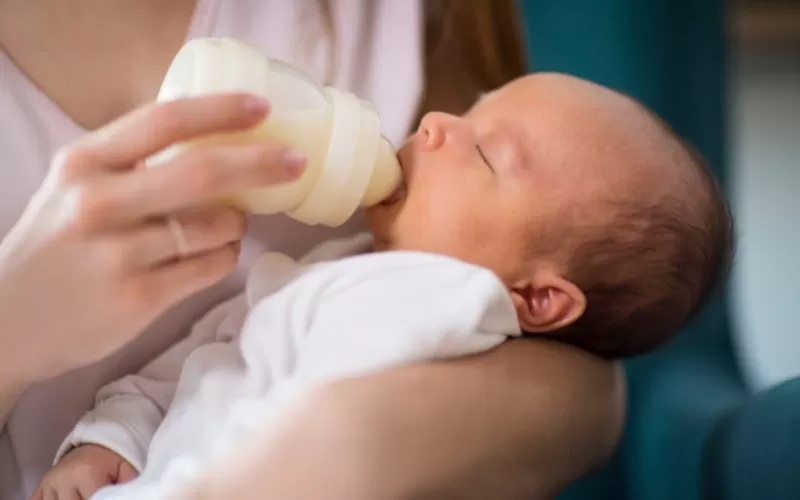
There are several different types of baby bottles, and choosing the right one depends on your baby’s feeding habits and your own preferences. Here’s an overview of the most common types of bottles:
- Standard bottles: These are the most commonly used bottles, with a basic cylindrical shape and an interchangeable nipple. They work well for most babies and are available in various materials.
- Anti-colic bottles: Designed to reduce air intake and prevent gas, these bottles have venting systems that help reduce colic symptoms. Our Anti-Colic Baby Bottle is an excellent choice if you’re looking to reduce fussiness after feeding.
- Angled bottles: These bottles are designed with a slight angle to keep the nipple full of milk, reducing the likelihood of your baby swallowing air during feeding.
- Wide-neck bottles: With a wider nipple base, these bottles mimic breastfeeding more closely, making them ideal for babies who switch between breast and bottle.
When choosing a material, consider the following options:
- Plastic: Lightweight and shatterproof, but be sure to choose BPA-free bottles to ensure safety.
- Glass: Durable and free of harmful chemicals, but can be heavier and prone to breaking if dropped.
- Silicone: Soft and flexible, silicone bottles are often a great choice for babies transitioning from breast to bottle.
- Stainless steel: Extremely durable and lightweight, though less common and often more expensive.
For more information on bottle materials, refer to A Guide to Baby Bottle Types and Materials to help you make an informed decision. Our Silicone Baby Bottle is a lightweight, flexible option that’s perfect for transitioning babies and parents seeking a safe, chemical-free alternative.
As you embark on your journey of selecting the best baby bottle, it’s also essential to consider how it fits into the broader context of your baby’s feeding experience. For instance, transitioning to solid foods can be a significant milestone for both you and your baby. To ease this process and ensure a smooth transition, check out our comprehensive guide, Introducing Solids Without the Stress: A Guide for Parents This resource provides valuable insights and tips on how to introduce solids in a stress-free manner, complementing your efforts in choosing the perfect baby bottle.
Nipple Flow and Shape: The Ultimate Guide to Choosing the Best Baby Bottles
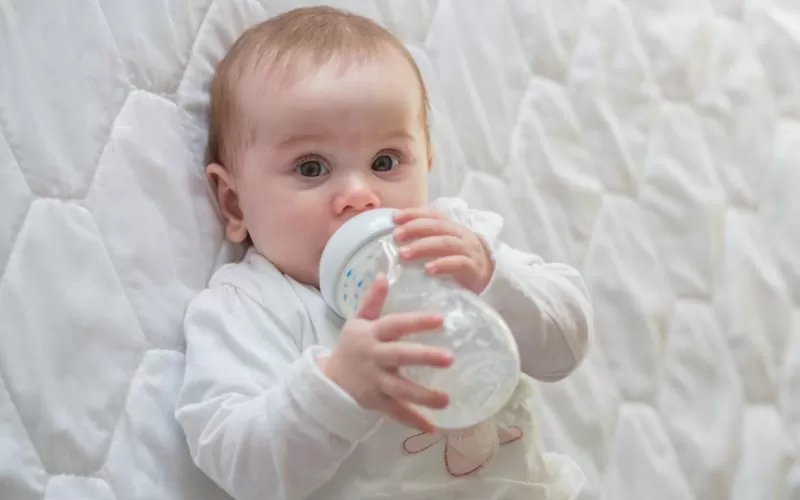
Choosing the right nipple flow and shape is just as important as selecting the bottle itself. Babies have different feeding preferences, and finding a nipple that suits your baby’s needs can make feeding easier and more comfortable. Here’s what to consider:
- Flow rates: Nipples are generally categorized by flow rates, ranging from slow flow for newborns to fast flow for older babies. It’s important to choose a nipple that matches your baby’s age and feeding ability.
- Nipple shapes: Some nipples are designed to closely mimic the breast, making them ideal for breastfed babies. Others have a standard shape, which works well for babies who primarily bottle-feed.
- Anti-colic nipples: These nipples have venting systems built in to reduce air intake and minimize discomfort for babies prone to gas and colic.
Our Wide-Neck Anti-Colic Bottle Set features nipples that not only mimic breastfeeding but also reduce the risk of colic, making them perfect for babies with sensitive tummies.
Tips for Transitioning Between Breastfeeding and Bottle-Feeding
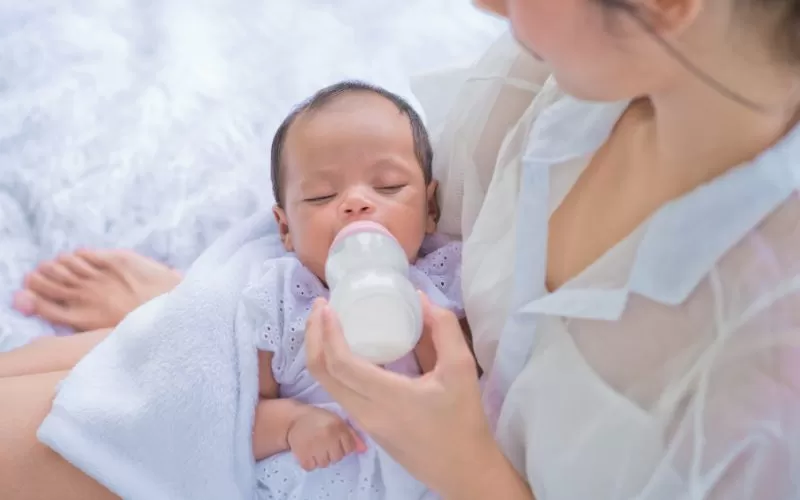
For moms who breastfeed, transitioning to a bottle can be a bit challenging. Many babies have trouble switching between the breast and bottle due to the differences in latch and milk flow. However, with a bit of patience and the right bottle, the process can be smoother.
Here are a few tips to help:
- Start slowly: Introduce the bottle gradually, starting with one feeding a day.
- Choose a bottle that mimics the breast: Bottles with wide nipples are designed to feel similar to breastfeeding, making it easier for your baby to latch.
- Let someone else feed the baby: Babies can sometimes refuse bottles if they know the breast is an option. Let a partner or caregiver try feeding them.
For a smoother transition, our Breast-Like Baby Bottle Set offers a natural feel, helping babies who switch between breastfeeding and bottle-feeding adjust more easily.
Transitioning from breastfeeding to bottle feeding can be a significant adjustment for both you and your baby. Understanding the best practices for making this switch can ensure a smoother experience. For helpful insights and practical strategies, check out our article on Breast to Bottle: Tips for Transitioning to Bottle Feeding. This guide covers essential tips, including choosing the right bottle, finding the best timing for the transition, and techniques to help your baby accept the bottle with ease.
Key Considerations: A Guide to Choosing the Right Baby Bottle

Before making your final decision, here are some additional factors to keep in mind when choosing the right baby bottle:
- Ease of cleaning: Bottles with fewer parts are generally easier to clean. Wide-neck bottles make it easier to reach inside for a thorough cleaning.
- Bottle weight: If you’ll be bottle-feeding frequently, choosing a lightweight option can help reduce strain on your hands and wrists.
- Compatibility with breast pumps: If you’re pumping milk, ensure the bottles you choose are compatible with your pump to avoid the hassle of transferring milk from one container to another.
In The Ultimate Guide to Choosing the Right Feeding Bottle, it’s clear that finding the best bottle involves considering both your baby’s needs and your own. By understanding the different types and features available, you’ll be better equipped to make a choice that suits your family.
Frequently Asked Questions: A Guide to Baby Bottle Types and Materials

Here are some common questions new parents have about baby bottles:
- How many bottles do I need? If you’re exclusively bottle-feeding, aim to have around 6-8 bottles on hand to avoid constant washing. If you’re breastfeeding, 3-4 bottles should suffice.
- When should I switch nipple sizes? As your baby grows, you’ll need to switch to a faster-flow nipple. Signs that it’s time to switch include frustration during feedings, longer feeding times, or your baby falling asleep during feedings.
- How often should I replace baby bottles? Glass bottles can last indefinitely, but plastic and silicone bottles should be replaced every few months or sooner if they show signs of wear.
When selecting the best baby bottle, it’s essential to consider how it fits into your overall feeding strategy, including breastfeeding. If you’re transitioning from breastfeeding to bottle-feeding, or if you’re planning to do both, understanding the nuances of breastfeeding can greatly enhance your experience. Our Breastfeeding Guide: How to Get Off to a Great Start provides valuable tips on establishing a successful breastfeeding routine, which can help ensure a smooth transition to bottle-feeding when needed. By incorporating insights from this guide, you can choose a bottle that complements your breastfeeding journey and supports your baby’s feeding needs effectively.
Conclusion: Choosing the Best Baby Bottle for Your Baby
Ultimately, the best baby bottle is one that suits both your baby’s needs and your lifestyle. Whether you prioritize ease of cleaning, anti-colic features, or materials like glass or silicone, there’s a perfect option out there. Our store offers a variety of bottles to meet every need, from the Anti-Colic Baby Bottle to the Glass Baby Bottle Set. Be sure to explore these products and more to find the right solution for your baby’s feeding routine.
Remember, A Guide to Choosing the Right Baby Bottle involves understanding the different types, materials, and features available. With this knowledge, you’ll be fully prepared for feeding time. Our curated product selection ensures you have everything you need. Feeding time will be comfortable and stress-free for both you and your baby.

